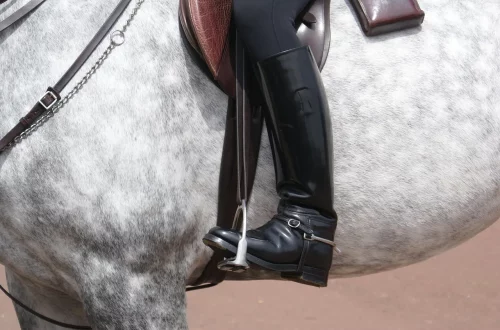
Effective Techniques to Stop Your Dog from Pulling on the Harness
Walking your dog should be an enjoyable experience, but for many pet owners, pulling on the harness can turn a simple stroll into a frustrating ordeal. Dogs are naturally curious creatures, eager to explore their surroundings, which can lead to them pulling on their leashes. While it’s understandable that they want to investigate everything from a passing squirrel to an intriguing scent, this behavior can create tension during walks and may even lead to injury for both the dog and the owner.
The good news is that there are effective techniques to help your dog learn how to walk calmly on a harness. Training your dog to walk without pulling is not only beneficial for your peace of mind but also contributes to their overall well-being and safety. A well-trained dog is more likely to enjoy their walks, and you’ll be able to focus on the experience rather than wrestling with a tugging leash.
Establishing a consistent routine, employing positive reinforcement, and understanding your dog’s behavior are essential components in overcoming pulling on the harness. By dedicating time and effort to this training, you can transform your walks into a more pleasant and harmonious experience for both of you.
Understanding Your Dog’s Behavior
Before diving into training techniques, it’s crucial to comprehend why dogs pull on their harnesses in the first place. Understanding your dog’s behavior can significantly enhance your training efficacy. Dogs pull for various reasons, including excitement, anxiety, or a desire to explore. Their natural instincts drive them to chase after moving objects or to investigate new smells, which can lead to pulling.
When a dog pulls, they often feel a sense of freedom and control. They might believe that pulling on the leash will get them to their destination faster, whether it’s a park or a specific spot in the neighborhood. This behavior can be particularly pronounced in young or energetic dogs who have not yet learned the boundaries of leash manners.
Additionally, stress or fear can cause a dog to pull. If they encounter something that scares them, they may try to escape the situation by pulling away. Recognizing these triggers can help you approach training from a more empathetic standpoint. Instead of simply correcting the behavior, you can work on alleviating the underlying issue causing the pulling.
Furthermore, some dogs may not have had enough exercise or mental stimulation, leading them to expend their energy through pulling. Ensuring that your dog has adequate physical and mental outlets can reduce their need to pull during walks. Engaging in activities such as fetch, agility training, or puzzle toys can help tire them out before heading out on a leash.
By taking the time to understand your dog’s motivations and behaviors, you can tailor your training approach to address these specific factors, making it more effective in reducing pulling on the harness.
Implementing Positive Reinforcement Techniques
Positive reinforcement is one of the most effective training methods for teaching dogs how to walk calmly on a harness. This technique involves rewarding your dog for displaying the desired behavior, making them more likely to repeat it in the future. Here’s how to implement this method effectively.
Start by choosing a high-value treat that your dog loves. This could be their favorite snack, small pieces of cooked chicken, or a special dog treat. The key is to select something that will motivate them to focus on you during walks. As you begin your training, keep these treats handy.
When you start your walk, encourage your dog to walk beside you. Use a cue word like “heel” or “let’s go” to signal your dog to walk with you. If your dog stays by your side without pulling, reward them with praise and a treat. This creates a positive association with walking calmly beside you.
If your dog begins to pull, stop walking immediately. Wait for them to return to your side or at least loosen the tension on the leash. Once they do, reward them with a treat and resume walking. This teaches your dog that pulling will not get them anywhere, while walking calmly will lead to rewards.
Consistency is key when using positive reinforcement. Make sure everyone in your household uses the same cues and rewards to avoid confusing your dog. Additionally, practice short training sessions regularly, gradually increasing the length of your walks as your dog improves.
Over time, your dog will learn that walking beside you is more rewarding than pulling ahead. Patience and persistence are essential, as behavior modification takes time. Celebrate small victories along the way, reinforcing the idea that calm walking is beneficial for both of you.
Utilizing Proper Equipment for Effective Training
Choosing the right equipment can make a significant difference in reducing pulling during walks. While a standard leash and collar are common, they may not be the best options for dogs prone to pulling. Harnesses, particularly those designed for training, can provide better control and comfort for your dog.
A front-clip harness is an excellent choice for dogs that pull. This type of harness attaches the leash to the front, which can help redirect your dog’s attention back toward you when they start to pull. The design of the harness discourages pulling by gently guiding the dog back to your side without causing strain on their neck.
Additionally, consider using a no-pull harness that has a unique design specifically aimed at discouraging pulling behavior. These harnesses often have features that tighten slightly around the dog’s torso when they pull, discouraging the behavior without causing pain or discomfort.
In combination with the right harness, a shorter leash can also be beneficial. A leash that is around four to six feet long allows for better control, preventing your dog from gaining too much distance and making it easier for you to guide them.
Moreover, ensure that the equipment you choose fits your dog properly. An ill-fitting harness can lead to discomfort and may even exacerbate pulling behavior. Take the time to measure your dog’s chest and neck, consulting sizing guides to find the perfect fit.
Investing in proper training equipment, along with your training techniques, can enhance the overall effectiveness of your efforts to reduce pulling on the harness.
Establishing a Routine and Consistency
Establishing a consistent walking routine can greatly aid in reducing your dog’s pulling behavior. Dogs thrive on routine and predictability, which helps them understand what is expected of them. By incorporating structured walks into your daily schedule, you can reinforce good behavior and create a positive experience for both of you.
Consider setting aside specific times each day for walks, ensuring your dog knows when to expect their outing. This anticipation can help them settle down and focus on their behavior during the walk. Additionally, try to keep the walks at a similar length and pace to help your dog understand the routine.
During these walks, maintain consistency in your training techniques. Use the same cues and rewards each time you walk your dog. Consistency in your actions will help reinforce your dog’s learning, making it easier for them to remember what is expected of them.
Incorporate training sessions into your walks as well. For example, practice “sit” and “stay” commands at various points during your walk. This not only reinforces obedience but also allows your dog to expend some energy in a controlled manner, reducing their desire to pull.
Moreover, be patient and persistent. Training takes time, and there will be ups and downs along the way. Celebrate the small successes and remain calm during setbacks. If you find yourself getting frustrated, take a break and return to the training with a fresh mindset.
By establishing a routine and consistently applying training techniques, you can help your dog learn to walk calmly on a harness, making your walks more enjoyable and stress-free.
In conclusion, transforming your dog’s pulling behavior requires understanding, consistent training, and the right equipment. By employing positive reinforcement techniques, utilizing proper gear, and establishing a routine, you can create a positive walking experience for both you and your furry friend. Remember that patience and persistence are key elements in this training journey, and with time, you will see improvements in your dog’s behavior.
**Note:** This article is not a substitute for professional veterinary advice. Always consult with a veterinarian for any health concerns regarding your pet.




